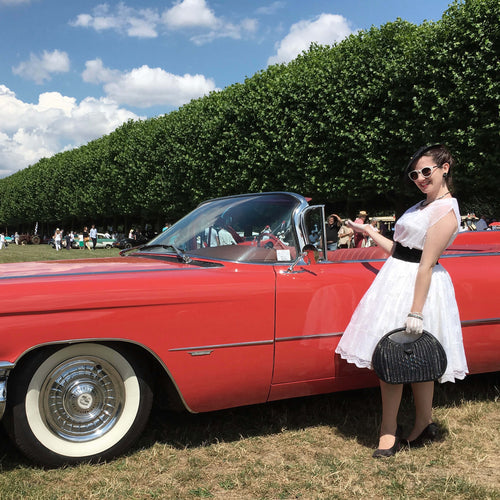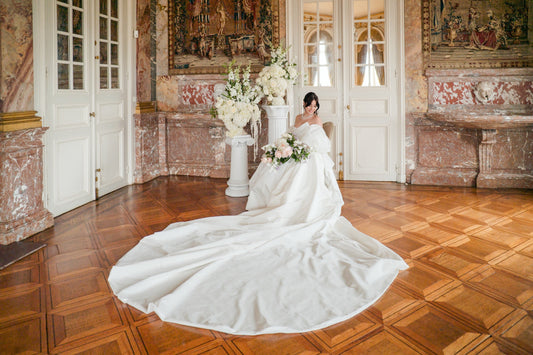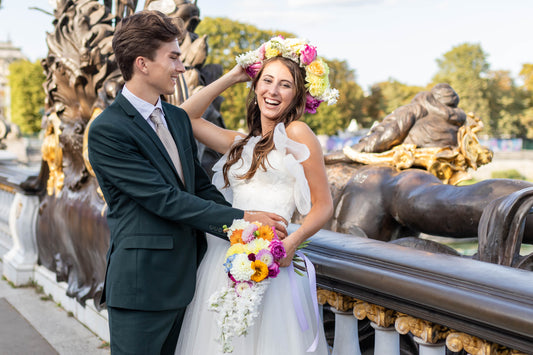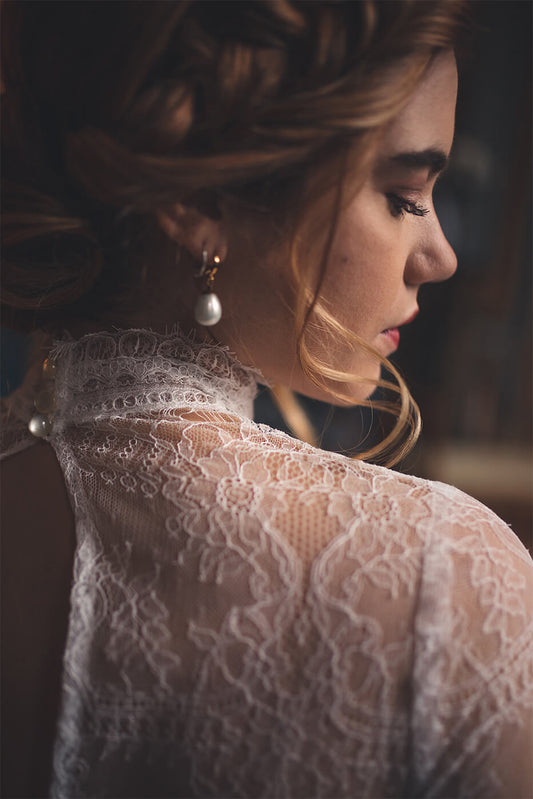
The History of Fashion in the 20th Century (Part 2/2)
Share this article
In the second half of the 20th century, fashion no longer simply dressed us; it embodied the hopes, struggles, and contradictions of a rapidly changing world. From the daring 1960s to the excesses of the 1980s, each decade marked a key milestone in this fascinating transformation. Prepare for a vibrant journey through the years that redefined how we dress—and what it says about us.
The 1960s
The Baby Boom generation is coming of age
As adults, the Baby Boomers are revolutionizing fashion by establishing youth as the ultimate ideal. They seek affordable, accessible fashion that reflects their dreams of freedom and modernity. With a booming economy, these young consumers are transforming fashion into a true mass phenomenon, far removed from the elitist circles of yesteryear. These important consumers are setting a new pace, where style must be both trendy and affordable.
The advent of ready-to-wear
Fashion became a universal means of expression. Ready-to-wear revolutionized window displays, making styles both affordable and varied. Young people adopted dress codes to assert their opinions, and by the end of the decade, outfits became a means of expressing ideas and demands. Sexual liberation, fostered by the legalization of the pill, broke taboos and inspired bold creations. At the same time, the worlds of music and film emerged as a major force, dictating trends and affirming the emergence of a free and resolutely modern generation.
Freedom, Peace and Love
Alternative lifestyles
The 1960s and 1970s saw an increased politicization of public life. In the midst of the Cold War, international crises, May 1968, and terrorism in Europe left their mark. In the face of this tense climate, alternative lifestyles emerged: drug use, free love, and a major feminist movement redefined societal rules.
The 1973 oil crisis amplified these upheavals by encouraging a return to naturalness. Fashion became a means of democratic expression, allowing everyone to assert their individuality.
Handmade
After 1973, natural materials and artisanal techniques returned to the forefront. Knitting and crochet emerged as symbols of this search for authenticity. But this return to basics wasn't limited to simplicity: the "luxury hippie" style made its appearance, championed by Yves Saint Laurent and his Bedouin dresses and Afghan jackets. People were enthusiastic about anything that evoked the traditional, the rural, or distant cultures.

Travelers, or "pilgrims," returning from India bring back in their suitcases caftans, draped trousers and embroidered vests, enriching this ethnic palette.
Glam rock and disco
In an often gloomy climate, glam rock and disco became vibrant antidotes. These styles offered an escape through sequins, tight-fitting leotards, and materials like lurex and spandex. Paired with music and dance, these outfits dazzled in the spotlight, embodying a festive and exuberant fashion. In contrast to a return to nature, they symbolized a world where creative energy and the will to shine transcended difficulties.
Working Girl and Golden Boy
Overconsumption and carelessness
After the authenticity of the 70s, the 80s took a 180-degree turn. Influenced by disco and glam rock, they were synonymous with money, showing off, and overconsumption, but also with fun, outrageous freedom, prosperity, and carefree living.
The woman conquers her professional emancipation: she becomes a working girl who (over)flaunts her power. An essential part of her wardrobe, the blazer jacket with oversized shoulder pads (Thierry Mugler) embodies this transformation, popularized by icons like Melanie Griffith in Working Girl , Angela Bower in The Boss or Michael Jackson in Thriller .
The decade of couturiers
The 1980s saw the emergence of empires built by designers such as Armani, Calvin Klein, and Ralph Lauren. Haute couture and luxury ready-to-wear enjoyed dazzling success in the United States, fueled by a very strong dollar. The wealthy flaunted their riches at balls hosted by President Reagan, while series such as Dynasty and Dallas showcased this ostentatious lifestyle.
Lingerie was emancipated and became a garment in its own right. The bra and corset, revisited by designers such as Vivienne Westwood, Jean Paul Gaultier, and Olivier Theyskens, were seen for the first time. Symbolizing liberation, eroticism, and self-affirmation, these pieces became a powerful message of the decade.
End of the century: showing off your body
A vintage look
The fall of the Berlin Wall in 1989 and the reunification of the two Germanys marked the end of an era. With political, cultural, and technological globalization, the boundaries between reality and the virtual world are becoming blurred, under the influence of ubiquitous media.
A vintage feel is sweeping through fashion. The sixties are revived through youthful creations, while Galliano for Dior reinterprets the twenties. The seventies are also still relevant. Dress codes are becoming more relaxed, allowing boxer shorts or jeans to become a must-have even at work. Sports fashion is becoming a daily phenomenon, and it's not uncommon to see unusual combinations, such as sneakers worn with luxury sunglasses!

Towards minimalism
In contrast to the extravagance of previous decades, a pared-down style prevailed. Cuts were structured and monochrome, neutral colors dominated, and simplicity blended with sophistication. Clothing emphasized quality fabrics and understated details. Accessories, such as watches, bags, and shoes, prioritized functionality while remaining refined. Finally, natural beauty prevailed, with sleek hair and light makeup, reflecting a quest for sobriety and timelessness, echoing an era where excess gave way to reflection.
Throughout its vibrant decades, fashion has established itself as much more than just the art of dressing. From the political demands of the 1960s to the boisterous insouciance of the 1980s, it has captured the hopes, tensions, and dreams of a constantly changing world. Each silhouette, each fabric, each daring sartorial statement tells the story of an era, oscillating between individuality and collective movements.
While exuberance sometimes gives way to sobriety, and craftsmanship dialogues with industry, fashion remains a universal language, blending nostalgia and innovation. It is an infinite playground, a faithful reflection of our struggles as well as our celebrations.
The first part is available here .



